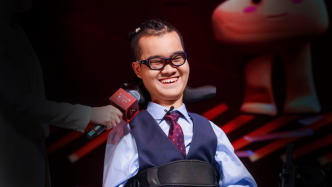
Cedars-Sinai Medical Center researchers have developed a combination of stem cell and gene therapy that could potentially protect diseased motor neurons in the spinal cord of patients with amyotrophic lateral sclerosis (ALS, commonly known as ALS). The research team confirmed that the implementation of the combination therapy is safe in humans. The research results were recently published in the journal Nature Medicine.
Using stem cells is an efficient way to deliver important proteins to the brain or spinal cord that would otherwise be unable to cross the blood-brain barrier, the researchers say. Research has proven that engineered stem cell products can be safely transplanted into the human spinal cord. After a one-time treatment, the cells survived and produced an important protein known to protect motor neurons that die in ALS for more than three years.
The data showed that none of the 18 patients treated with the new approach experienced serious side effects after the transplant.
The study used stem cells to produce a protein called neurotrophic factor (GDNF), which is derived from a glial cell line and promotes the survival of motor neurons, which transmit signals from the brain or spinal cord Cells that are delivered to muscles to achieve movement.
The researchers transplanted engineered stem cells into the central nervous system where motor neurons reside. These stem cells turned into new supportive glial cells and released the protective protein GDNF, which together help motor neurons stay alive.
The main goal of the trial is to ensure that GDNF-releasing cells are delivered into the spinal cord without any safety concerns or affecting leg function.
Because ALS patients typically lose strength in both legs at a similar rate, the researchers transplanted the stem cell gene product into one side of the spinal cord to allow a direct comparison of the effects of the treatment in the legs. They have developed a new injection device that can safely deliver stem cell gene products into a patient's spinal cord. After the transplant, the patients were followed up for one year in order to measure leg strength. The results showed that the cell transplant had no negative effect on muscle strength in the treated leg compared to the untreated leg.
In another clinical trial for the treatment of ALS, the research team used GDNF-secreting stem cells and transplanted the cells into a specific brain region—the motor cortex that controls hand movement—to demonstrate its safety.
[Editor-in-chief's circle]
ALS is a chronic neuronal disease. The cause of the disease is unknown and there is no cure. However, active treatment can delay the course of the disease and allow patients to live as long as possible with a higher quality of life. The combination of stem cell and gene therapy developed by the researchers can theoretically delay the course of ALS. The stem cell product can be transplanted into a person's spinal cord, and the cells produce a protein that promotes motor neuron survival. Although it has not been able to fundamentally change the patient's gradually frozen nervous system, it is also an attempt to keep neurons alive. The current trial is mainly to verify the safety of the therapy to confirm that there are no negative effects on patients.
(Original title "Stem cell + gene therapy combination therapy for ALS is proven safe")


